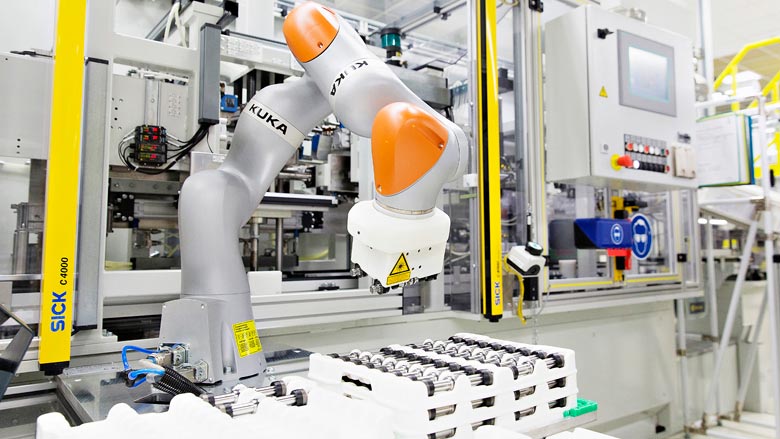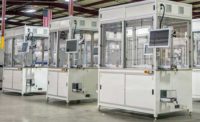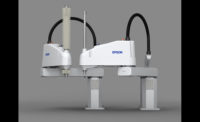According to ASSEMBLY magazine’s annual Capital Equipment Spending Survey, demand for robots will continue unabated this year. Sales of six-axis robots, SCARAs, grippers and other robotic technology are expected to increase 11 percent, from $720 million in 2023 to $799.4 million in 2024.
Thirty-eight percent of plants will purchase robots next year, a record high. Demand for robots should be particularly strong in the automotive, aerospace and electronics industries.
A driving force behind the spike in demand for robots is the continued popularity of collaborative robots. Some 42 percent of assemblers—a record high—are currently using the technology or plan to within the next year. Another 15 percent expect to deploy the technology in the next two to three years.
If you’re looking for robotics, you’re in the right place. The ASSEMBLY Show South hosts numerous robot OEMs, as well as multiple suppliers of grippers and other robotic peripherals.
Here’s a sampling of the new robotics technology that can be found on the show floor.
Click on the headings below for product information.

This 3D vision system automatically recognizes randomly distributed parts, determines the best pick candidate, and calculates the most optimal path so that a robot can safely, but surely, pick up the part and move it to its desired destination. Setup is simple with user-friendly software. Engineers simply dump the parts into a bin and hit the start button.
The camera is mounted above the pick area. Several models are available. RV300 has a measurement area of 340 by 340 by 100 millimeters. RV500 has a measurement area of 540 by 540 by 200 millimeters. RV1100 has a measurement area of 1,160 by 1,160 by 600 millimeters. RV1100+ has a measurement area of 1,300 by 1,300 by 900 millimeters. Part recognition time ranges from 1.6 to 1.8 seconds.
Canon USA Inc.
http://usa.canon.com
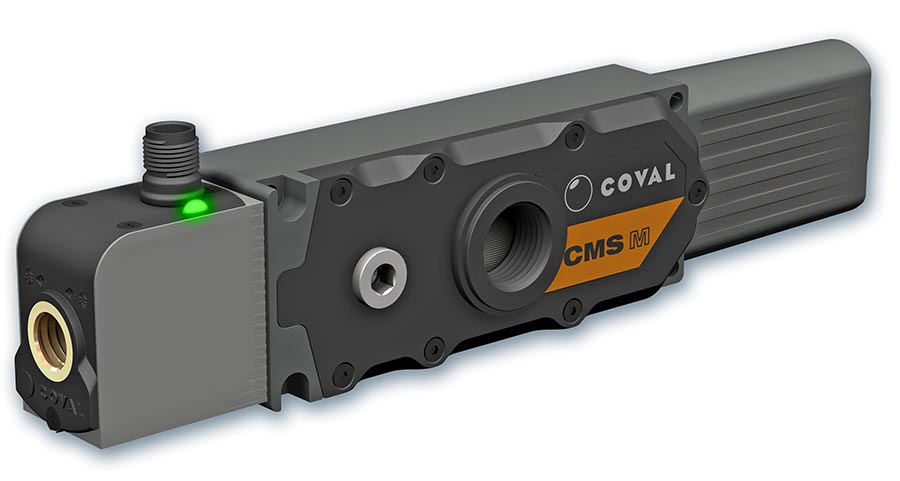
The CMS M multistage miniature vacuum pump provides high suction for handling porous parts, tank emptying, or random gripping in challenging industrial environments. Thanks to its ultra-compact design and an optimized multistage Venturi system, the pump provides powerful suction while reducing compressed air consumption. Its modular design allows easy adaptation to various applications and simplifies maintenance.
Available in two suction capacities (250 and 500 normal liters per minute), with or without vacuum and blow-off control, these pumps also offer two exhaust configurations to match every need. Multistage technology maximizes the energy input of compressed air, achieving a maximum vacuum level while generating significant suction flow.
Coval Vacuum Tech Inc.
www.coval.com
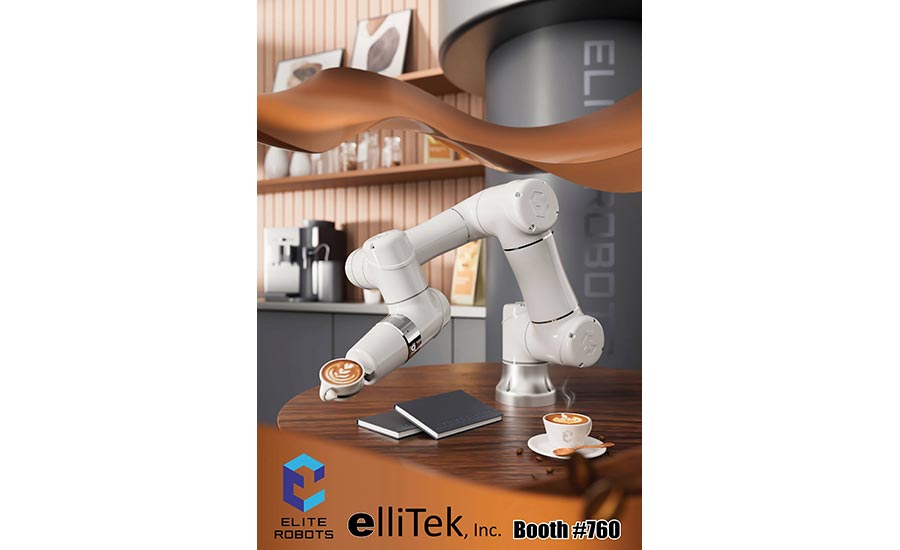
With intuitive programming interfaces, built-in safety mechanisms, and adaptable designs, collaborative robots from Elite Robots can perform a variety of applications, from machine tending to making a nice cup of coffee. These cobots have been designed for reliability, with a mean time between failure of 35,000 hours. Equipped with a user-friendly interface, Elite Robots’ cobots empower engineers with basic knowledge of electrical automation to master their capabilities effortlessly.
Two lines are available. The CS Series has five models with payload capacities ranging from 3 to 25 kilograms and a reach ranging from 624 to 1,800 millimeters. The EC Series has six models with payload capacities ranging from 3 to 16 kilograms and a reach ranging from 624 to 1,900 millimeters.
Visit the company’s booth to enjoy a freshly brewed cup of coffee or latte prepared by an Elite Robot.
elliTek Inc.
www.ellitek.com

The SHW end-of-arm tool changer has a cylindrical bolt that locks the upper and lower assembly together. A centering disc can be installed on both the upper assembly (robot side) and lower assembly (tool side) of the robot and ensures that the end-of-arm tools are correctly aligned with the robot arm. The tool changer’s interface complies with DIN EN ISO 9409-1. Its positional repeatability is less than 0.02 millimeter, and it can perform more than 5,000 tool changes with no loss in accuracy. The device can be released and closed with one hand. No tools are required. A locking pin secures the hand lever against unintentional release. The tool changer has an integrated mounting surface for energy feed-through.
GRIP USA LLC
www.grip-gmbh.com
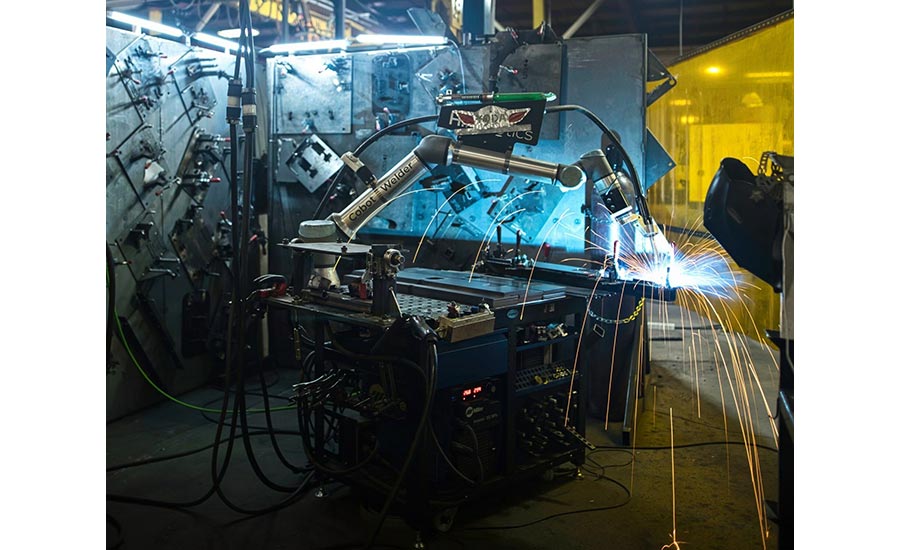
The base of the Cobot Welder is a collaborative robot from Universal Robots: either a UR10e with a 51-inch reach or a UR20 with a 68.9-inch reach. The cobot is equipped with a Miller Cobot Welding Package, including an Invision 352 MPa pulsed welder and S74 feeder, a Tregaskiss Tough Gun MIG welding gun, a Hirebotics Smart Puck for software-free teaching, and a Siegmund 48-by-32-inch welding cart in various sizes. The UR20 version comes with a 5-by-10-foot table. The system also includes an operator panel with emergency stop for quick program start. Programming is simple: Engineers enter the welding parameters in an app on a smartphone or tabled, then teach the welds with both hands on the robot. The system can weld steel alloys, aluminum and stainless steel. The software guides engineers through the right weld settings to get a perfect weld every time.
Hirebotics LLC
www.hirebotics.com
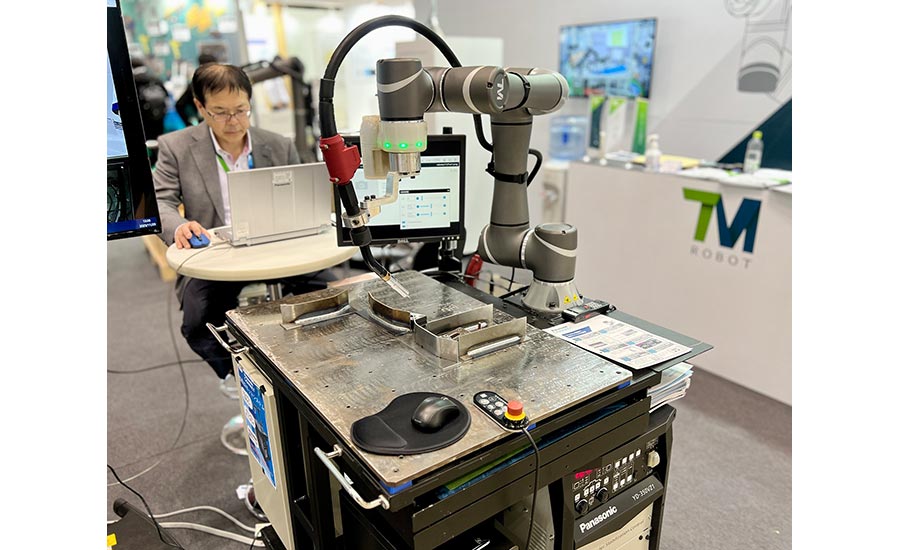
The TM25S collaborative robot can carry a maximum payload of 25 kilograms. It has a reach of 1,902 millimeters and move at a speed of up to 5.2 meters per second. A built-in smart vision system, supplemented by a 3D camera, enables the cobot to perform tasks that demand precision and intelligence, such as mixed-case depalletizing. The cobot’s integration with NVIDIA’s Isaac Sim platform paves the way for creating digital twins, which can reduce programming times by 70 percent and cycle times by 20 percent.
Uchimura Robotics LLC
https://uchimurarobotics.com
